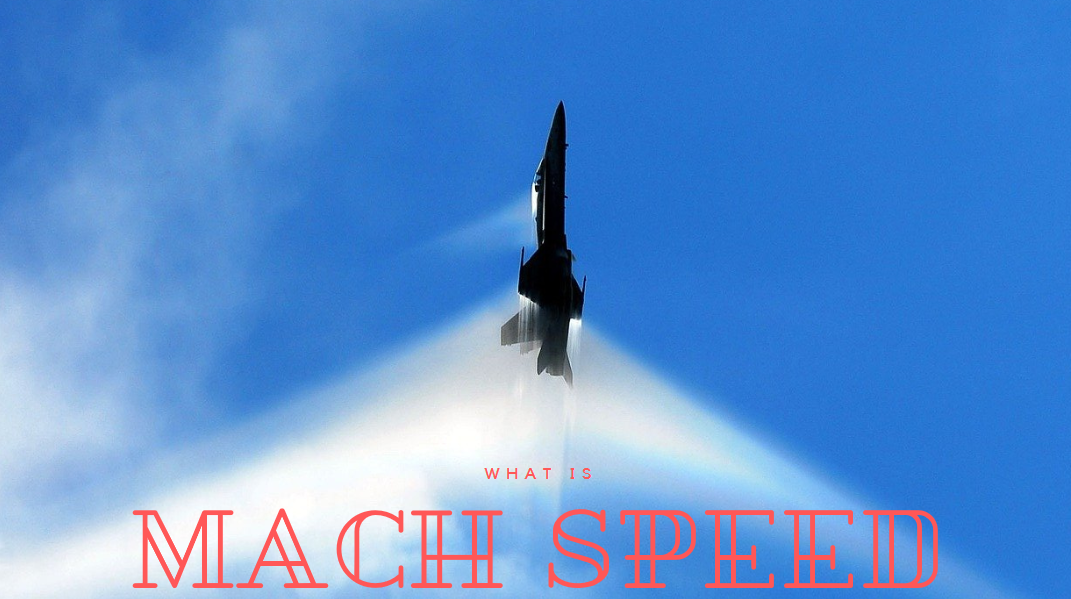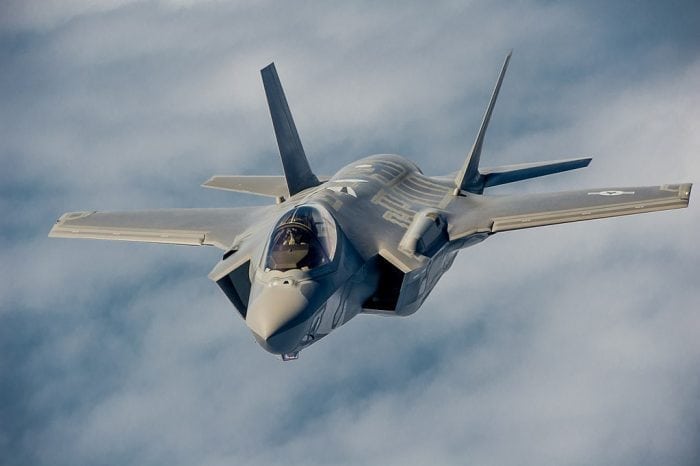
Mach Speed is when an object moves faster than the speed of sound. For normal and dry conditions and temperature of 68 degrees F, this is 768 mph, 343 m/s, 1,125 ft/s, 667 knots, or 1,235 km/h.
If you’ve ever watched a movie with fighter jets in it, chances are you’ve heard them talk about Mach numbers. Yet while pilots in these movies will routinely talk about planes traveling at Mach 2 or 3, what does that mean in reality? As it turns out, Mach numbers don’t indicate a set speed, and two different planes can actually be at the same Mach number while moving at different speeds.
Ultimately, Mach numbers are defined by their relationship to the speed of sound. However, the speed of sound isn’t constant and can actually fluctuate greatly depending on things like the atmospheric conditions observed at a particular place and a particular time.
What Is Mach 1?
Mach numbers were created thanks to the work of Ernst Mach, an Austrian physicist. While Mach contributed much to the fields of cosmology and optics, he was the one to first describe the speed of sound, as well as what happens when an object exceeds the speed of sound. Mach noted that when objects accelerate faster than the speed of sound, an interesting phenomenon occurs.
As an airplane approaches the speed of sound, the sound waves that are emitted by the plane itself cannot get ahead of the plane. This causes the sound waves to pile up and accumulate in a cone of sound which forms directly behind the aircraft. As the aircraft passes an area, all the accumulated sound is released at once as the cone of sound expands rapidly. This is the mechanism that creates sonic booms.

A Mach number is calculated by dividing an object’s speed by the speed of sound. Photo: NASA.gov, Public Domain
Mach 1 refers to the point at which an aircraft exceeds the speed of sound, creating a sonic boom. What is the exact speed of sound? That question is more difficult to answer than you would think, as the exact speed of sound is dependent upon a variety of variables, like the current temperature and air pressure of the air the sound is passing through.
As a general rule though, at an air temperature of 0 degrees Celsius (32 degrees Fahrenheit), the speed of sound is approximately 331 meters per second (1,087 feet per second). In general, sound can travel faster in warmer air, so when the temperature is at 20 degrees Celsius (or 68 degrees Fahrenheit) the speed of sound is at 343 meters (or 1127 feet) a second. Note that the figures given here reflect the speed of sound at sea level, and at higher altitudes, the speed of sound gets incrementally slower.
Supersonic And Hypersonic Speeds
That covers Mach 1, but what about the other Mach numbers? Put simply, Mach 2 means that an aircraft is traveling twice the speed of sound. Mache 3 means an aircraft is traveling three times the speed of sound, and so on. Remember that like Mach 1 these other Mach speeds are relative, they reflect two or three times the speed of sound in those specific conditions. In general, the Mach number of an aircraft can be determined by dividing the velocity of the craft by the speed of sound at the given altitude of the craft.
In terms of the various Mach numbers, they fall into a few different categories. The Mach numbers can be split into Transonic, Supersonic, Hypersonic, and High-Hypersonic categories.
“Most pilots learn, when they pin on their wings and go out and get in a fighter, especially, that the one thing you don’t do, you don’t believe anything anybody tells you about an airplane.” — Chuck Yeager
While anything below Mach 1 is considered to be Subsonic, aircraft that fly at approximately Mach 1 are considered to be Transonic craft. This covers craft moving at 0.8 to 1.3 Mach. The compression effect of sound comes into consideration around Mach 1, and because of the high drag that is created by the compression Transonic aircraft typically have swept wings to deal with the drag.
From 1.3 Mach to 5.0 Mach exists the Supersonic range of speed, air behaves quite differently above Mach 1, so planes that fly at Supersonic speeds must be extremely aerodynamic with sharp edges and moveable canards. Continuous shockwaves will be generated by planes moving at Supersonic speeds, necessitating their slick design. Planes that move at Supersonic speeds must also be designed with aerodynamic heating in mind.
The first-ever Supersonic aircraft was the Bell X-1, an experimental rocket-powered plane. Most aircraft that will exceed Mach 1 will be either experimental or military craft. There is seldom a need for a civilian craft to go Mach 1 or higher, although there have been attempts at making Supersonic passenger travel a real thing. The Concorde was a supersonic passenger plane, but ultimately it was decided that the operational cost did not justify its use and the project was shelved.

Photo: MSgt John Nimmo Sr. – https://www.dimoc.mil/ via Wikimedia Commons, Public Domain
The fighter jets that are capable of moving at Supersonic speeds, such as the F-15 Eagle or the F-35 Lightning II, must make concessions in their design so that they can still move and fight adequately at lower speeds. “True” Supersonic jets (jets designed for the main purpose of moving at Supersonic speeds) include the aforementioned Concorde and the SR-71 Blackbird.
The range of speed that exists from Mach 5 to Mach 10 is considered to be hypersonic. At Hypersonic speeds, some of a plane’s energy will actually excite the chemical bonds that make up molecules of oxygen and nitrogen in the air. This means that planes designed to move this fast require that the chemistry of the air be taken into account when designing them.

Photo:NASA – from https://www.dfrc.nasa.gov/Gallery/Photo/X-15/HTML/EC88-0180-1.html, Public Domain
Hypersonic aircraft include the X-15 experimental research craft and the Boeing X-37 Orbital Test Vehicle. The X-15 set the record for the highest speed ever achieved by a manned aircraft at almost 7,237 kilometers an hour (4,520 miles an hour) in 1967, piloted by William J. Knight. Meanwhile, the X-37 is an experimental vehicle used by Boeing to test reusable space technologies and conduct experiments in space which can then be returned to Earth.
Any speed above Mach 10 is considered to be in the High-Hypersonic range. At these speeds, the aerodynamic form of a vehicle takes a bit of a backseat to thermal control, as the sheer friction in the atmosphere can heat up a craft to extreme temperatures. High-Hypersonic designs are usually much blunter than regular Hypersonic or Supersonic designs.

The X-43 being carried by a NASA B-52. Photo: NASA.gov, Public Domain
NASA’s X-43 experimental craft is one of the fastest aircraft in the world, capable of achieving High-Hypersonic speeds of around Mach 9.6, or 12,100 kilometers an hour (7,520 MPH) at altitudes of more than 30,000 meters (98,400 ft). It has a distinguishing blunt nosecone created to deal with the harsh atmospheric drag and compression flying at those speeds entails.
As scientists and engineers continue to work on crafts capable of more easily achieving supersonic and hypersonic speeds, more and more opportunities are opening up. Researchers are looking into the applications for new Super and Hypersonic crafts, and this includes a possible revival of Supersonic passenger travel. In the future, it might even be possible to travel from Hong Kong to Los Angeles in just four hours. Just remember that your Mach speed will be fluctuating as you do so.








